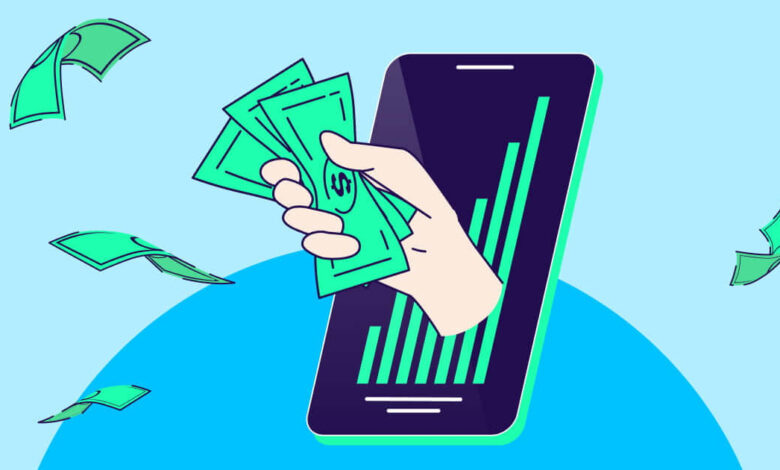How to Monetize Your Streaming App and Maximize Revenue

The streaming industry has experienced explosive growth, with millions of users worldwide consuming on-demand video, music, and live content daily. While building a streaming app can be a lucrative venture, monetizing it effectively is the key to turning it into a sustainable business. Adopting the right monetization strategies can maximize revenue and ensure long-term success, whether your app caters to entertainment, education, or live events.
This guide explores proven ways to monetize streaming app, from subscriptions to innovative approaches like virtual events and in-app purchases.
Understanding Your Audience and Market
Before implementing monetization strategies, it’s crucial to understand your audience’s preferences and behaviors. Consider:
- Demographics: Age, location, income, and interests influence purchasing decisions.
- Content Preferences: Analyze what type of content resonates most with your audience—movies, music, sports, or educational content.
- Platform Competition: Study competitors in your niche to identify gaps and opportunities.
Knowing your audience helps tailor monetization strategies to their expectations, increasing the likelihood of engagement and spending.
1. Subscription-Based Model (SVOD)
The Subscription Video on Demand (SVOD) model charges users a recurring fee—monthly or annually—for unlimited access to your content library. This model works well for apps offering exclusive, high-quality content.
Why It Works
- Provides predictable and recurring revenue.
- Encourages user retention through continuous value delivery.
- Works well for diverse content libraries or niche markets.
Implementation Tips
- Offer tiered pricing plans to cater to different audience segments, such as basic, premium, or family packages.
- Include free trials to attract new users and showcase your app’s value.
- Regularly update your content library to keep subscribers engaged.
Example: Netflix and Disney+ have successfully leveraged SVOD by offering a mix of blockbuster movies, original content, and family-friendly shows.
2. Ad-Supported Model (AVOD)
The Ad-Supported Video on Demand (AVOD) model allows users to access content for free while generating revenue through advertisements. This model appeals to audiences unwilling to pay for subscriptions.
Why It Works
- Lowers the barrier to entry by offering free access.
- Provides opportunities for partnerships with advertisers.
- Increases app reach and engagement.
Implementation Tips
- Use pre-roll, mid-roll, or post-roll ads strategically without overwhelming users.
- Leverage targeted ads based on user data for higher engagement and ROI.
- Offer an ad-free premium tier for users willing to pay for uninterrupted viewing.
Example: YouTube and Spotify’s free tier have mastered AVOD by balancing ad frequency with user satisfaction.
3. Freemium Model
The freemium model provides free access to basic content or features while offering premium options for a fee. This strategy works well for attracting a broad user base and converting them into paying customers.
Why It Works
- Attracts a wide audience by eliminating upfront costs.
- Encourages users to explore the platform before committing to payment.
- Allows users to customize their experience by purchasing upgrades.
Implementation Tips
- Offer enticing premium features such as offline downloads, high-definition streams, or exclusive content.
- Highlight the benefits of upgrading to a premium plan through in-app messaging.
- Use gamified elements, like unlocking rewards or tiers, to encourage spending.
Example: Spotify’s freemium model converts free users into premium subscribers by offering ad-free listening and offline downloads.
4. Pay-Per-View and Rentals (TVOD)
The Transactional Video on Demand (TVOD) model charges users for individual content, such as movies, concerts, or events. This strategy is ideal for exclusive or time-sensitive content.
Why It Works
- Appeals to users who prefer one-time payments over recurring subscriptions.
- Works well for high-demand content like new movie releases or live sports events.
- Offers flexibility for users with specific viewing preferences.
Implementation Tips
- Set competitive pricing for content based on its exclusivity or demand.
- Bundle content into packages to encourage higher spending.
- Highlight time-sensitive content to create urgency.
Example: Apple iTunes and Amazon Prime Video successfully monetize through rentals and pay-per-view for new releases and premium content.
5. Live Streaming and Virtual Events
Live streaming and virtual events add a dynamic element to your streaming app, creating unique opportunities for monetization. From sports and gaming to webinars and concerts, live content attracts highly engaged audiences.
Why It Works
- Drives engagement with real-time interaction.
- Appeals to fans of exclusive, event-based content.
- Creates opportunities for sponsorships and partnerships.
Implementation Tips
- Use pay-per-view pricing for special events like live concerts or sports matches.
- Offer memberships or subscriptions for access to exclusive live streams.
- Introduce virtual tipping or donations for creators during live events.
Example: Twitch monetizes live gaming streams through subscriptions, ads, and donations, creating a loyal fanbase.
6. In-App Purchases and Microtransactions
In-app purchases allow users to buy additional features, content, or tools within the app. This strategy is effective for apps that include interactive or customizable elements.
Why It Works
- Provides a secondary revenue stream beyond subscriptions or ads.
- Encourages users to spend incrementally on small-value items.
- Works well for apps with community or creator-driven content.
Implementation Tips
- Offer virtual goods, such as skins or avatars, to enhance the user experience.
- Introduce gifting options, enabling users to support creators or share perks with friends.
- Create bundles or discounts to incentivize larger purchases.
Example: TikTok generates revenue through virtual gifts and tipping, allowing users to support their favorite creators.
7. Sponsorships and Partnerships
Collaborating with brands or creators can drive revenue through sponsorships and partnerships. This approach works well for niche apps with a dedicated audience.
Why It Works
- Enhances app credibility through brand collaborations.
- Provides an additional revenue stream without directly charging users.
- Aligns content with brand sponsorships for targeted engagement.
Implementation Tips
- Partner with brands to sponsor exclusive shows or events.
- Offer branded integrations, such as product placements or co-branded content.
- Collaborate with influencers to promote content and attract new users.
Example: Twitch and YouTube regularly collaborate with sponsors to support events and exclusive content.
8. Data Monetization
User data, when handled ethically and in compliance with privacy regulations, can be monetized through analytics and insights. Advertisers and content creators value these insights for targeted campaigns.
Why It Works
- Provides an additional revenue stream without impacting user experience.
- Helps advertisers and partners reach their target audience more effectively.
- Unlocks opportunities for improving app features based on data.
Implementation Tips
- Anonymize user data to ensure compliance with privacy laws like GDPR and CCPA.
- Share audience insights with advertisers for tailored ad placements.
- Use data analytics to refine content recommendations and improve engagement.
9. Merchandise Sales
Streaming apps with a strong brand or loyal user base can diversify revenue streams by selling branded merchandise. This approach builds community and fosters deeper engagement.
Why It Works
- Strengthens brand identity and loyalty.
- Provides a tangible way for users to support the platform.
- Creates an additional, scalable revenue stream.
Implementation Tips
- Sell branded merchandise such as apparel, accessories, or collectibles.
- Introduce limited-edition items to create exclusivity.
- Promote merchandise through in-app banners or influencer partnerships.
Example: Netflix and Disney+ capitalize on their franchises by offering merchandise tied to popular shows and movies.
10. Hybrid Monetization Models
Combining multiple monetization strategies can help maximize revenue by appealing to different user segments. A hybrid model allows you to cater to both premium subscribers and ad-supported users.
Why It Works
- Balances accessibility with profitability.
- Appeals to a broader audience by offering flexible options.
- Diversifies revenue streams for long-term stability.
Implementation Tips
- Combine free, ad-supported access with a premium, ad-free tier.
- Use in-app purchases alongside subscriptions for additional revenue.
- Experiment with bundling to offer users more value.
Example: Hulu uses a hybrid model with ad-supported and ad-free subscription tiers, alongside live TV and content rentals.
Conclusion
Monetizing a streaming app requires a thoughtful approach that balances user satisfaction with revenue generation. Whether through subscriptions, ads, live events, or merchandise, the right combination of strategies can help you maximize profitability while delivering a superior user experience.
By understanding your audience, experimenting with hybrid models, and continuously refining your approach, you can unlock the full potential of your streaming app and achieve long-term success. Start implementing these strategies today and watch your revenue grow!



